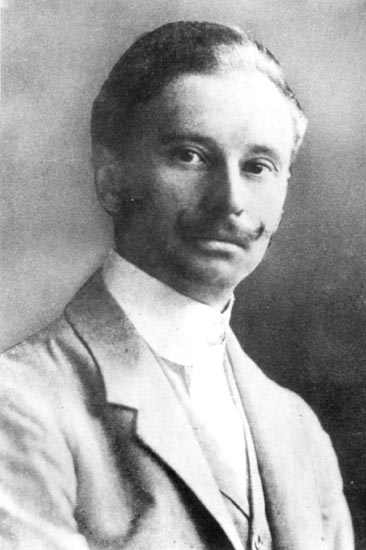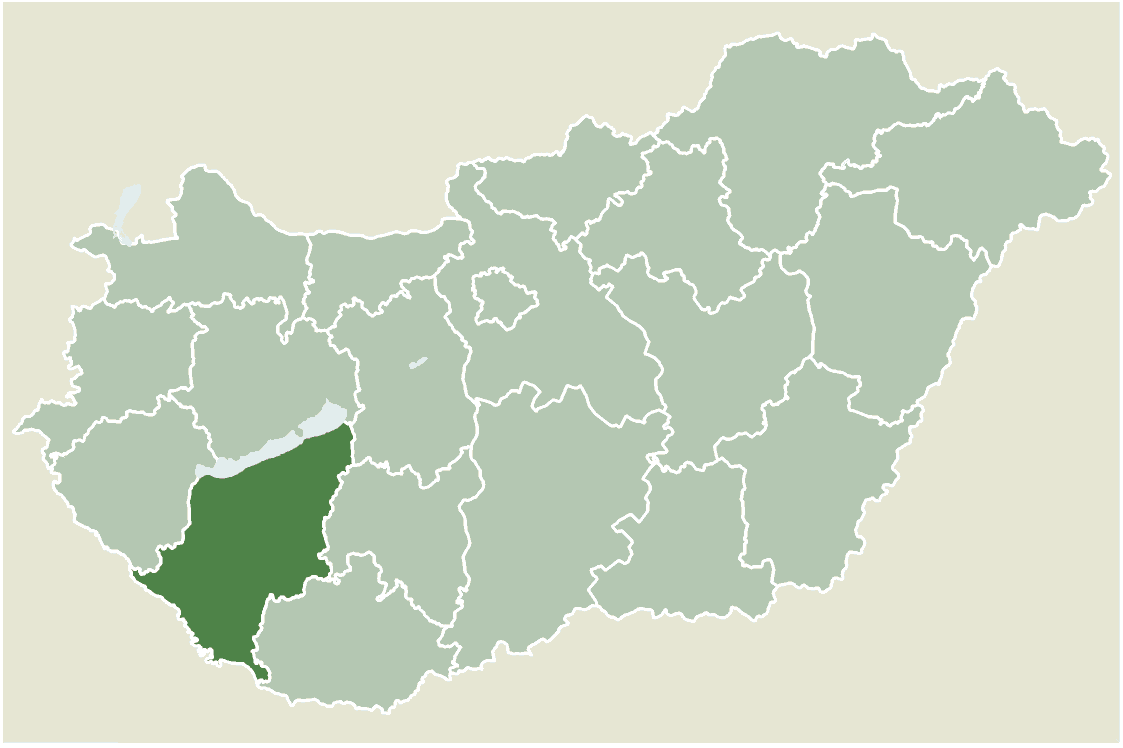|
Ede Magyar
Ede Magyar (Ede Oszadszki) (Orosháza, 31 January 1877 – Szeged, 5 May 1912) was an architect, nicknamed 'the Hungarian Gaudi' for his similar organic style. Life and career The son of Mihály Oszadszki, a cabinet maker, Magyar was three years old when the family changed its name. He became a master builder after studying in Budapest in 1901, and completed further studies abroad. His short but notable career focused on Szeged where he designed the Reök Palace (1907) and numerous other organic buildings. He was only 35 when he committed suicide following disappointment in love. He was buried in Dugonics cemetery where there is a permanent memorial to him tended by the city council since 2004. Works *Szeged: Burghardt House (Cafe Wien); Schaffer House (1904); Reök Palace (1907); Unger-Mayer House (1911), Reformed Palace *Senta, Zenta: Rottmann House (1910); Royal Hotel (1911) *Kaposvár Theatre (1911) with Jozsef Stahl *Hódmezővásárhely: Simon Palace (1910) T ... [...More Info...] [...Related Items...] OR: [Wikipedia] [Google] [Baidu] |
Orosháza
Orosháza is a city situated in the westernmost part of Békés county, Hungary, on the Békés ridge bordered by the rivers Maros and Körös. Orosháza is an important cultural, educational and recreational centre of the region. Main sights The city's main attractions are the Orosháza-Gyopárosfürdő spa complex, the Szántó Kovács János Museum, the Darvas József Literary Memorial House, and the Town Art Gallery. The only museum in the country devoted to water wells is found in Orosháza. At the Rágyánszky Arboretum, more than 2000 plant species in 6000 varieties can be seen. The Lutheran church, was built between 1777 and 1830 in late Baroque style. It is located in the centre of the town. The bell carried by the first settlers, who migrated from Zomba, is kept in front of the altar of the church. A number of cultural and entertaining programmes are organised in the town every year. Notable residents * The cantor Marcel Lorand was born in the city in 1912. ... [...More Info...] [...Related Items...] OR: [Wikipedia] [Google] [Baidu] |
Szeged
Szeged ( , ; see also #Etymology, other alternative names) is List of cities and towns of Hungary#Largest cities in Hungary, the third largest city of Hungary, the largest city and regional centre of the Southern Great Plain and the county seat of Csongrád-Csanád County, Csongrád-Csanád county. The University of Szeged is one of the most distinguished universities in Hungary. The Szeged Open Air (Theatre) Festival (first held in 1931) is one of the main attractions, held every summer and celebrated as the Day of the City on 21 May. Etymology The name ''Szeged'' might come from an old Hungarian language, Hungarian word for 'corner' (), pointing to the turn of the river Tisza that flows through the city. Others say it derives from the Hungarian word which means 'island'. Others still contend that means 'dark blond' () – a reference to the color of the water where the rivers Tisza and Mureș (river), Maros merge. The city has its own name in a number of foreign language ... [...More Info...] [...Related Items...] OR: [Wikipedia] [Google] [Baidu] |
Budapest
Budapest (, ; ) is the capital and most populous city of Hungary. It is the ninth-largest city in the European Union by population within city limits and the second-largest city on the Danube river; the city has an estimated population of 1,752,286 over a land area of about . Budapest, which is both a city and county, forms the centre of the Budapest metropolitan area, which has an area of and a population of 3,303,786; it is a primate city, constituting 33% of the population of Hungary. The history of Budapest began when an early Celtic settlement transformed into the Roman town of Aquincum, the capital of Lower Pannonia. The Hungarians arrived in the territory in the late 9th century, but the area was pillaged by the Mongols in 1241–42. Re-established Buda became one of the centres of Renaissance humanist culture by the 15th century. The Battle of Mohács, in 1526, was followed by nearly 150 years of Ottoman rule. After the reconquest of Buda in 1686, the ... [...More Info...] [...Related Items...] OR: [Wikipedia] [Google] [Baidu] |
Reök Palace
The Reök Palace ( hu, Reök-palota) is an Art Nouveau building in downtown Szeged. It was designed by Ede Magyar Ede Magyar (Ede Oszadszki) (Orosháza, 31 January 1877 – Szeged, 5 May 1912) was an architect, nicknamed 'the Hungarian Gaudi' for his similar organic style. Life and career The son of Mihály Oszadszki, a cabinet maker, Magyar was three yea ... and built in 1907. It hosts exhibitions of modern fine arts. External linksOfficial website {{coord missing, Hungary Buildings and structures in Szeged ... [...More Info...] [...Related Items...] OR: [Wikipedia] [Google] [Baidu] |
Senta
Senta ( sr-cyrl, Сента, ; Hungarian: ''Zenta'', ; Romanian: ''Zenta'') is a town and municipality located in the North Banat District of the autonomous province of Vojvodina, Serbia. It is situated on the bank of the Tisa river in the geographical region of Bačka. The town has a population of 18,704, whilst the Senta municipality has 23,316 inhabitants (2011 census). History Archaeological finds indicate that the area around the modern settlement was populated from the prehistoric times. Neolithic and eneolithic societies settled in the vicinity of modern Senta thousands of years ago leaving credible traces of their presence. A Neolithic Tiszapolgár–Bodrogkeresztúr culture necropolis was found in Senta. The first historic population that might have lived in the area were most likely the Agathyrsi (6th century BC). With certainty we can claim that the inhabitants of the early "Senta" in the 6th century AD were Sarmatians, Slavs alike and Avars. Hungarian people inv ... [...More Info...] [...Related Items...] OR: [Wikipedia] [Google] [Baidu] |
Kaposvár
Kaposvár (; also known by other alternative names) is a city with county rights in the southwestern part of Hungary, south of Lake Balaton. It is one of the leading cities of Transdanubia, the capital of Somogy County, and the seat of the Kaposvár District and the Roman Catholic Diocese of Kaposvár. Etymology and names The name ''Kaposvár'' is derived from the Hungarian words ''kapu'' (gate) and ''vár'' (castle). Variants of the city's name include ''Ruppertsburg'' / ''Ruppertsberg'' / ''Kopisch'' (German), ''Kapoşvar'' ( Turkish), ''Rupertgrad'' ( Slovene), and ''Kapošvar'' ( Croatian). Symbols The shield of Kaposvár features a castle with a rounded arch port surmounted by three battlements with loopholes on a hill of green grass. The flag of Kaposvár consists of the coat of arms placed over a yellow background. Geography Kaposvár is surrounded by the hills of the outer Somogy area around the Kapos river and the forests of Zselic. It lies southwest of Budapes ... [...More Info...] [...Related Items...] OR: [Wikipedia] [Google] [Baidu] |
Hódmezővásárhely
Hódmezővásárhely (; also known by other alternative names) is a city with county rights in southeast Hungary, on the Great Hungarian Plain, at the meeting point of the Békés-Csanádi Ridge and the clay grassland surrounding the river Tisza. In 2017, it had a population of 44,009. Etymology and names The city's name, which literally translates to ''Beavers' Field Marketplace'', was first mentioned after the unification of two Árpád-era villages, Hód and Vásárhely, the former getting its name after Beaver's lake, an apocope of ''Hód-tó'' (now one of the city's districts and the canal ''Hód-tavi-csatorna)'' and the latter coming from the mediaeval legal term marking settlements with the right of hosting markets and literally meaning market town. The middle term ''mező'', which also refers to the city's state as an ''oppidum'', a city with certain rights that are given by its feudal ruler, was later added to the town and to its name. The city is also known by alternati ... [...More Info...] [...Related Items...] OR: [Wikipedia] [Google] [Baidu] |





